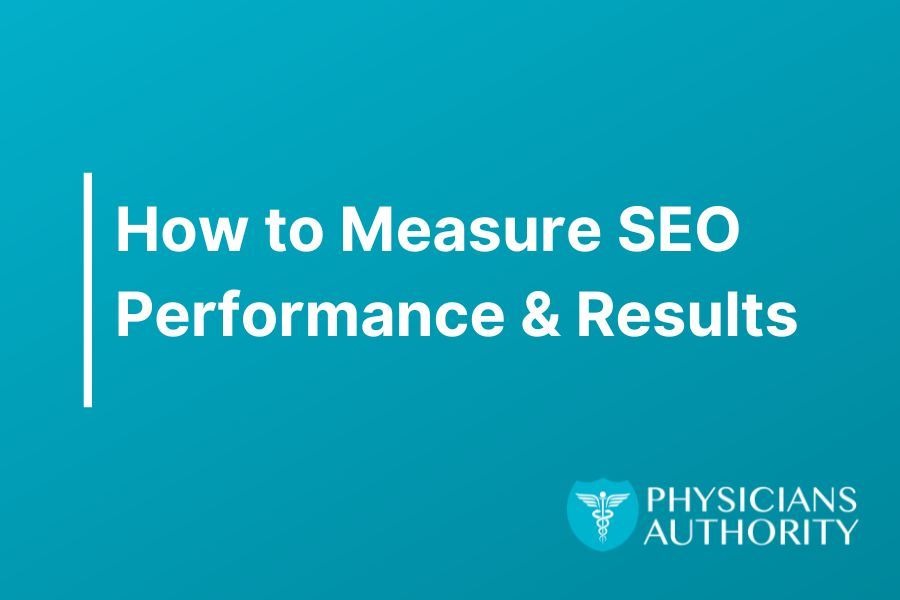
How To Measure SEO Performance And Results
Page Contents
Search engine optimization (SEO) is a critical element of any successful digital marketing campaign. It allows organizations to improve their visibility and reach in the online space, helping them attract more customers, leads, and profits. Measuring SEO performance and results can be difficult for those without experience or expertise in this field. This article provides an overview of how SEO performance and results can be measured accurately so that businesses are able to maximize their success from their campaigns.
The first step in measuring SEO performance and results involves understanding what metrics should be tracked. This requires knowledge of both organic search engine traffic metrics such as impressions and clicks, as well as website analytics data like bounce rate and average time on page. By tracking these metrics over time, it is possible to gain insight into which strategies are working best for driving visitors to your site.
Finally, it is important to understand how to interpret the data gathered through measurement efforts. Various tools exist which allow users to analyze website traffic graphically, allowing them to identify trends easily while also giving them insight into areas where improvement may be needed. With the right combination of measurement techniques and interpretation skills, organizations can make informed decisions about their SEO strategy based on objective evidence of its effectiveness.
Definition Of SEO
Search Engine Optimization, commonly known as SEO, is an ever-evolving and complex collection of practices employed to increase the visibility of digital content online. Like a kaleidoscope that constantly reconfigures its pattern, SEO requires constant attention and strategic thinking in order for it to be successful. It can often feel like a never-ending puzzle, so understanding the fundamentals of SEO is essential for any digital marketer or business owner who wants to stay ahead of their competition.
To understand what SEO is, one must first look at how search engines index web pages. Search engine algorithms crawl websites with bots to determine where they should rank on page results when someone searches for certain keywords related to the website’s products or services. In other words, these algorithms are designed to identify which sites contain relevant information about a specific topic and subsequently display them higher up in the rankings than those deemed irrelevant. This means that if your website does not have proper optimization techniques applied, then chances are you won’t show up very prominently in search engine results – resulting in less organic traffic coming through your site.
The practice of optimizing content for search engines involves utilizing various tactics such as keyword research and link building – all within Google’s guidelines – so that the crawlers recognize your content as being both relevant and beneficial to users looking for answers or solutions related to what your website offers. By doing this correctly you can ensure better ranking positions relative to competitors whose websites may be less optimized than yours in terms of relevancy and quality standards set forth by search engines alike. With this knowledge, businesses can then take actionable steps towards improving their overall standing among search engine result pages (SERPs). Ultimately, understanding what SEO is will ultimately lead to increased website traffic and more potential customers reaching out via organic search queries.
Key Performance Indicators (KPIs)
Measuring SEO performance and results is essential in order to gain insights into the success of a website. Key Performance Indicators (KPIs) are used to measure SEO performance and they provide an indication as to where improvement can be made. The most common KPIs for measuring SEO performance are visitor traffic, search engine rankings, organic click-through rate (CTR), lead conversion rates, average site visit duration and bounce rate.
Visitor traffic consists mainly of visitors coming from organic search queries or keywords related to the website’s topic. This KPI provides information about how successful the optimization process has been. Search engine rankings refer to how high up on SERPs your website appears when certain keywords are searched for by users. Organic CTR is another important metric to consider when evaluating SEO performance as it indicates whether potential customers find your webpages relevant enough after viewing them on SERPs. Lead conversion rates demonstrate if visitors take action such as subscribing or making a purchase while visiting your website due to its optimized content. Average site visit duration helps track user engagement with content and bounce rate reflects navigation away from pages quickly, suggesting that there may be an issue with page relevance or quality of content provided.
All these metrics should be carefully monitored over time in order to spot changes which might require immediate attention so that corrective measures can be taken in a timely manner in order improve overall SEO performance and results. Additionally, benchmarking against competitors would help gain further insight into what kind of strategies could generate better outcomes for any given website’s specific goals.
Analyzing Data
In the same way that a carpenter needs tools to build furniture, a digital marketer requires data metrics and results tracking to measure SEO performance. The ability to analyze SEO data is essential for understanding how the website is performing in organic search. To do this effectively, marketers must track and monitor several key performance indicators (KPIs) such as page rank, click-through rate (CTR), bounce rate, average time on site, number of monthly users, total visits and new sessions.
Analyzing these KPIs provides insight into whether or not the website is achieving its desired objectives. For example, if the goal is to increase brand visibility then tracking CTR will provide valuable information about how effective advertising campaigns are at driving traffic from SERPs. Similarly, measuring average time on site can reveal which pages visitors find most engaging; allowing marketers to optimize those pages for better user experience. Tracking conversions through analytics software allows marketers to assess ROI and other important conversion metrics like customer lifetime value (CLV).
It’s also important to note that analyzing SEO performance shouldn’t be limited only to individual websites but should take into account competitive landscape as well. By looking at competitors’ rankings and engagement levels it’s possible to determine areas where improvements could be made in order to gain an edge over them. With all this data collected, analyzed properly and tracked regularly, marketers can make informed decisions when it comes to improving their SEO strategy and overall performance.
Making Adjustments
Making adjustments to SEO performance and results is a continuous process. Optimization strategies must be regularly evaluated, updated and improved in order to maintain successful growth. To accurately measure the progress of an optimization effort, website metrics should be tracked over time and compared with changes in keyword rankings.
To track results effectively:
* Monitor overall website traffic using analytics tools such as Google Analytics or Adobe SiteCatalyst.
* Track organic search engine visits by measuring how often visitors click on keywords related to your site or product offerings after searching for it online.
* Measure any positive changes in keyword ranking – from tracking these metrics you will gain insight into which SEO efforts are having the greatest impact and can adjust accordingly.
By making timely adjustments based on data-driven decisions, organizations can maximize their returns from SEO initiatives while minimizing risks associated with long-term investments that may not yield desired outcomes. Tracking results allows companies to continually refine their strategies for greater success, ensuring business objectives are being met through effective use of optimization techniques.
Conclusion
The journey of SEO is akin to a long and winding road, one that requires keen insight and diligent effort. To effectively measure performance and results, it is essential to have the right navigational tools. This includes understanding the basics of Search Engine Optimization (SEO), identifying key performance indicators (KPIs) for success, analyzing collected data, and making necessary adjustments.
Just as travelers require maps to understand their current location in relation to their destination, so too must SEO professionals use KPIs as guides on their path towards success. They can then review data tracked through analytics programs such as Google Analytics or Hotjar to note how users interact with webpages and content over time. After careful observation, they can make changes based on what works best for their website’s overall rankings in search engine results pages (SERPs).
Navigating the ever-changing landscape of SEO is no easy feat; however, those who are willing to invest the effort into properly measuring SEO performance may be rewarded with higher rankings in SERPs and greater visibility online. By having an awareness of traffic sources, bounce rates, user engagement levels, return visits, conversions generated from organic searches and other KPIs related to SEO campaigns, websites stand a better chance at reaching desired goals.
Start Your Medical Marketing Today!
Other Blogs You May Be Interested In












Leave a Reply